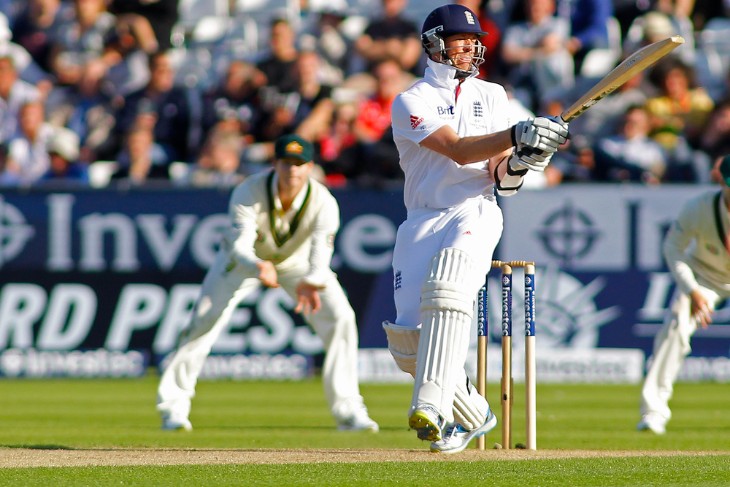- The Carbon Footprint of Cricket Grounds
- Energy-Efficient Practices in Cricket Facilities
- Water Conservation Measures in Cricket Grounds
- Waste Reduction and Management in Cricket
- Biodiversity and Green Spaces on Cricket Grounds
- Transportation and Eco-Friendly Commuting for Cricket Events
- Sustainable Sourcing and Catering in Cricket Matches
- Community Engagement and Environmental Education in Cricket
- Financial Implications and Benefits of Sustainable Cricket
- Conclusion
Cricket, deeply rooted in English culture, has undergone a significant transformation in recent years. Beyond the boundaries and wickets, a new arena of competition has emerged, one that revolves around environmental sustainability.
The concept of sustainability in cricket encompasses a broad spectrum of activities and initiatives aimed at reducing the sport's ecological footprint and fostering environmental responsibility. The growing awareness of climate change and the importance of conserving natural resources have driven cricket authorities, clubs, and fans to take a proactive stance. This shift towards environmental consciousness is not merely a trend; it is a necessity for the sport's survival and relevance in a changing world.
To understand the evolution of environmental sustainability in English cricket, it is essential to delve into its historical context. Cricket, as a sport, has a rich and storied tradition, but the consideration of its ecological impact is a relatively recent phenomenon.
In the past, cricket was primarily concerned with the game itself, and environmental concerns were largely overlooked. However, as societal awareness of environmental issues grew, cricket enthusiasts, players, and administrators started to acknowledge the sport's contribution to ecological problems.
The Carbon Footprint of Cricket Grounds
Cricket grounds, while iconic and essential for the sport, have a substantial carbon footprint. The maintenance of large stadiums, including lighting, temperature control, and transportation, consumes a considerable amount of energy. The carbon emissions associated with these activities have raised concerns about the sport's environmental impact.
Efforts are being made to assess and reduce the carbon footprint of cricket grounds. This includes adopting energy-efficient lighting systems, utilizing renewable energy sources, and implementing sustainable transportation options for fans attending matches. Additionally, some grounds have introduced carbon offset initiatives to mitigate their emissions. Addressing the carbon footprint of cricket grounds is a vital step towards achieving environmental sustainability in the sport.
Energy-Efficient Practices in Cricket Facilities
Cricket facilities, from stadiums to training centers, have been working towards adopting energy-efficient practices. This involves the use of LED lighting, which consumes less electricity and has a longer lifespan than traditional lighting systems. Furthermore, the installation of solar panels on stadium roofs has become increasingly common, allowing for the generation of clean energy and a reduction in reliance on fossil fuels.
In addition to energy-saving technologies, cricket facilities have been implementing energy management systems to monitor and control energy consumption effectively. These systems help in optimizing energy usage during matches and events. Moreover, energy-efficient building designs and insulation are being incorporated to reduce heat loss and improve temperature regulation within indoor training facilities. These efforts not only reduce operational costs but also contribute to the overall sustainability of English cricket.

Water Conservation Measures in Cricket Grounds
Water conservation is a crucial aspect of environmental sustainability in cricket. Maintaining lush green pitches and well-irrigated outfields has been a long-standing tradition. However, this practice has put a significant strain on water resources, especially during periods of drought and water scarcity.
To address this challenge, cricket grounds have implemented various water conservation measures. These include the installation of advanced irrigation systems that use sensors and weather data to optimize water usage, reducing wastage significantly. Rainwater harvesting is another eco-friendly practice adopted by many grounds, capturing and storing rainwater for use in watering the pitches and maintaining green spaces. Additionally, some cricket facilities have switched to drought-resistant grass varieties that require less water, further contributing to water conservation efforts in the sport.
Waste Reduction and Management in Cricket
Waste generation during cricket matches and events is a significant concern. The large crowds that gather at stadiums often result in considerable waste, including packaging, food containers, and other materials. Addressing waste reduction and management is an essential step towards achieving environmental sustainability.
Cricket grounds have taken proactive measures to reduce waste generation by promoting recycling and responsible disposal practices. The introduction of recycling bins and clear signage encourages fans to separate recyclables from non-recyclable waste. Furthermore, some stadiums have adopted the use of biodegradable or compostable packaging materials, reducing the environmental impact of discarded items. Waste management strategies also involve partnering with waste disposal companies to ensure that waste is properly sorted and processed after matches, diverting a significant portion from landfills.
Biodiversity and Green Spaces on Cricket Grounds
The maintenance of cricket grounds often entails the creation of expansive green spaces, but this presents a unique opportunity to support biodiversity. Many cricket venues have recognized the importance of preserving and enhancing natural habitats within their facilities. This includes planting native flora, creating wildflower meadows, and establishing wetlands and ponds to attract local wildlife.
These efforts not only contribute to the conservation of biodiversity but also enhance the overall aesthetic appeal of cricket grounds. It provides a unique experience for spectators who can enjoy the sights and sounds of nature while watching the game. The commitment to fostering biodiversity demonstrates cricket's dedication to environmental sustainability and the promotion of harmonious coexistence with the natural world.
Transportation and Eco-Friendly Commuting for Cricket Events
Transportation to and from cricket matches and events is a significant contributor to carbon emissions. To mitigate this impact, cricket authorities and venues have been actively promoting eco-friendly commuting options for fans. This includes the provision of bicycle racks and secure parking facilities for cyclists, encouraging more sustainable modes of transportation.
Furthermore, public transportation initiatives are being expanded, with improved access to buses and trains for fans attending matches. Some venues even offer shuttle services from nearby transport hubs to reduce the reliance on private cars. The promotion of carpooling and ridesharing has also gained traction, reducing the number of vehicles on the road and the associated emissions.
Sustainable Sourcing and Catering in Cricket Matches
The procurement of food and beverages for cricket matches and events has seen a shift towards sustainability. Cricket venues have increasingly embraced the concept of sourcing products locally and ethically. This approach reduces the carbon footprint associated with transporting goods over long distances and supports local farmers and businesses.
Furthermore, sustainable catering practices have gained prominence, with an emphasis on reducing food waste and single-use plastic. Some cricket stadiums have implemented measures such as reusable cutlery and containers, as well as composting organic waste. Additionally, the availability of vegetarian and vegan options has expanded, promoting a more environmentally friendly and inclusive dining experience for fans.

Community Engagement and Environmental Education in Cricket
Environmental sustainability in English cricket extends beyond the boundaries of the pitch. It encompasses a commitment to engage with local communities and educate fans about environmental issues. Many cricket clubs and organizations have initiated community outreach programs, such as tree planting events and clean-up initiatives, to involve fans and residents in environmental conservation efforts.
Moreover, environmental education programs have been integrated into cricket events and school outreach activities. This approach aims to raise awareness among fans, particularly the younger generation, about the importance of sustainability and the role cricket can play in addressing environmental challenges. By fostering a sense of environmental responsibility within its fan base, cricket contributes to a more eco-conscious society and a brighter future for the planet.
Financial Implications and Benefits of Sustainable Cricket
Examining the financial aspects of environmental sustainability in English cricket reveals a compelling narrative. While implementing sustainable practices may require initial investments, the long-term benefits outweigh the costs. For instance, energy-efficient technologies and reduced resource consumption can lead to significant cost savings in the operation of cricket facilities. Lower energy bills and reduced waste management expenses contribute positively to the financial bottom line.
Moreover, sustainability initiatives can enhance a cricket club's brand image and reputation. Fans and sponsors are increasingly drawn to organizations that align with environmentally responsible values. This can result in increased ticket sales, sponsorship deals, and merchandise revenue. The financial gains from such partnerships can be reinvested in further sustainability projects or used to support community and educational initiatives.
As English cricket continues to evolve, the future of environmental sustainability within the sport looks promising. A growing commitment to eco-friendly practices and responsible stewardship of resources has set a precedent for future generations. The incorporation of sustainable technologies, such as renewable energy and water-saving systems, is expected to become more widespread across cricket grounds.
Additionally, the sport's role as an educational and community platform is likely to expand. Engaging fans and local communities in environmental conservation efforts will remain a key focus. Cricket has the potential to inspire broader societal changes towards sustainability, not only in the sporting world but also in everyday life.
Conclusion
In conclusion, the journey towards environmental sustainability in English cricket is an ongoing process, driven by the collective efforts of cricket authorities, clubs, fans, and players. It signifies a commitment to preserving the environment while embracing the sport's rich traditions and values. By adopting and advancing these initiatives, English cricket paves the way for a greener, more sustainable future.
For more information:


